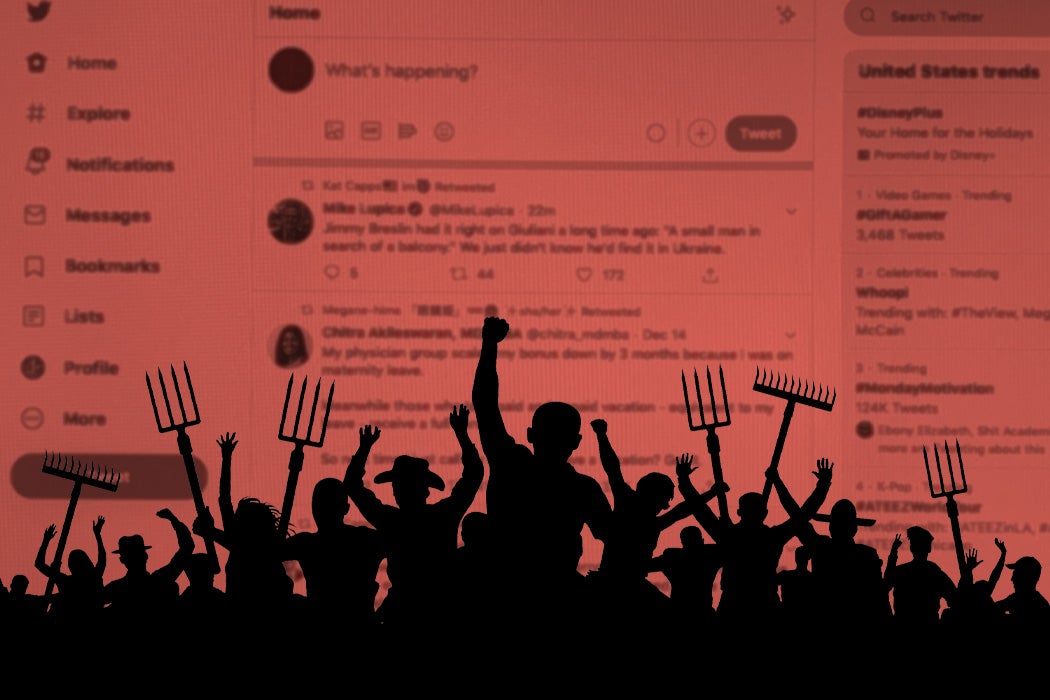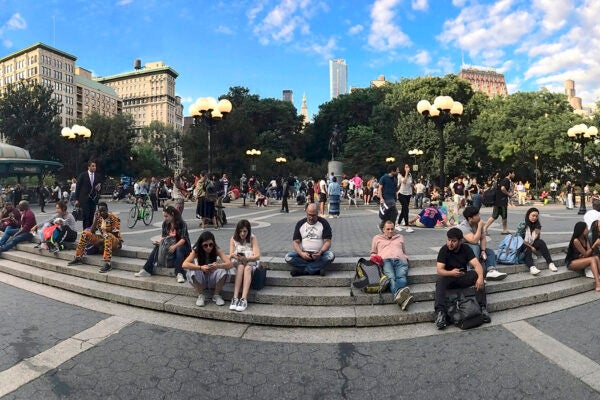As the year draws to a close, it’s hard to believe it’s also the end of a very strange and tumultuous decade. Who knows what the next ten years will bring? All signs point to a continuation of the same roller coaster ride of social, political, and environmental upheaval, except we’ll probably have to get used to endless puns about hindsight being 2020. It’s a good thing a nice cosy chat about language is kind of the Snuggie of polite, anxiety-free conversation we need these days. What did happen to language during the awkward teen years of the millennium? So many things!
Most obviously, we could point to many emerging slang terms from the last ten years that left an impression, if the numerous hot takes by media commentators are anything to go by, from bae to YOLO to everything else that was on fleek and had everyone shook etc., etc. But while a lot of slang terms might be fire now (and not necessarily the dumpster kind), there’s no telling whether they have any staying power. Will “lit” become the 1870s “nanty narking” of the 2010s or “extra” the new “enthuzimuzzy?” As the novel impact of these terms become diluted, especially by those who are fellow-kids-ing their hearts out, they fall out of fashion, becoming less effective as a way to show where you belong.
This is nothing really new, but looking deeper, how much do these slang terms really represent what went on in the last ten years? Although the internet has been around for a while (people often forget that the web, a virtual millennial at 25, is not the same thing as the internet, born in 1969, which would totally be Gen X if it cared, which, whatever), it’s really in this decade that internet language came into its own.
There was a definite linguistic growth spurt from the real native speakers of the online world coming of age, building on successive waves of internet language. The ways we convey information now, not just through text but internet memes, emojis, gifs, short form video, and the language and meta-language we use to reference these new forms of creative communication, have all influenced mainstream language in fascinating ways. The hashtag, for example, birthed around 2007, soon became a commonplace but powerful element of online communication that not only linked information from different sources, it encapsulated what a spontaneous online community was centered around. Hashtags added nuance and meta-commentary to what was said.
But our ways of speaking have been racing ahead faster than many of us can keep up with. While language change is not a new thing, thanks to the wide-ranging network of social media, it’s different in how fast and how virally it can spread now, as well as the impact it can have on real life, as speakers take up the linguistic trends used in their groups. Gender neutral “they,” for example, has been a thing for hundreds of years, yet today, it’s far more widespread and accepted, becoming Merriam-Webster Dictionary’s word of the year.
What’s really remarkable is not just the random slang that comes and goes, but those neologisms that arose out of a desperate need, like gender neutral pronouns, that spoke to the real and urgent issues arising in society that demand a public debate and a way to talk about them. When we begin to reassess our identities, we also question where we belong and what we believe, together as a group. It’s terms like #MeToo and “woke” and even “fake news” that have resonance in today’s world, as a kind of call to arms, in a way that “on fleek” does not. These terms seek to open up to debate the things that were once blindly accepted and taken for granted. It’s these terms that may outlast the ephemeral slang cycle, and it’s these terms that reveal this decade’s remarkable preoccupation with self, community, belonging, beliefs, and the language that goes hand in hand with building these ties.
Often we talk about language in innocent, superficial ways, as though new ways of communicating are exactly as they appear. This simplistic idea of language as, say, listicles of intriguing new slang conceals the fact that, in our post-truth world, language has become more overtly dangerous, and this can be both bad or good. Language has always been effectively used in propaganda or advertising to persuade masses of people, only now we have a better understanding of how it does this, as it’s become much easier, through social media, to use language as an effective weapon, a means of amplifying information of all kinds, by pretty much anyone who wants to (theoretically). And when you have masses of people not legally sanctioned to criticize social behaviors, this can be a concern to some.
Judging from panic-stricken media commentary, sometimes it seems as though the one thing more frightening than a lone gunman (and it isn’t a young person responding to your well-intentioned life advice with “ok boomer”) is a random bunch of people who have banded together in some common cause. When this common cause is being aggrieved against someone’s problematic behavior, and results in “calling out,” silencing or boycotting the problematic behavior, we now call this “cancelling” someone. And the tendency toward this kind of behavior is called “cancel culture.”
Perhaps more than anything else, cancel culture will be seen as an intrinsic part of life lived publicly in this decade, with the downfall of powerful Hollywood producers, racist and sexist comedians, white supremacists, and clueless corporations left in its wake. Cancel culture, not unlike cyberbullying, has also had its more “innocent” victims, ordinary citizens who said the unacceptable thing in a public forum. Is the destructive power of cancel culture too much?
Many perceive this phenomenon of cancelling as a very new and scary thing that young people do, so much so that they’re ready to cancel the whole thing. Even Barack Obama weighed in on it recently, cautioning young people not to be overly critical and judgmental, as though the very idea of “cancelling” must always wrong and unreasonable, regardless of what is being criticized or how problematic it may be. Obama’s negative reactions to this kind of power being wielded by a groups that are relatively powerless, as an establishment figure (no matter how benevolently he presents himself), are perhaps not unusual.
The social psychologist John Drury shows that the discourse around crowds, collectives, and people power have historically been problematic and negative, revealing the class biases and political ideologies of those commentators who describe them. Communities and crowds out of step with societal norms are often presented as something to be feared, and this is something many of us internalize. Crowds are scary. Even as we speak, there’s civil unrest, protests, demonstrations, and strikes happening all around the world, for a myriad of different reasons, in a decade that began with the Arab Spring and Occupy Wall Street protests. These movements have not often been described in flattering terms.
The kind of language that’s used to talk about groups of people assembled together—or their collective actions seeking to change the status quo—often maligns communities as irrational, “mobs” or “rioters” with uncontrolled, invalid emotions, a kind of faceless contagion that presents a threat to civilized, law-abiding society and the ruling establishment. As Drury points out, this language systematically delegitimizes the aims of these collectives as being trivial, if not dangerous:
If the crowd is pathologized and criminalized, then its behaviour is not meaningful. There can therefore be no rational dialogue with it. Since the crowd is not part of the democratic process, it is legitimate and even necessary to suppress it with the full force of the state.
No one could argue that it’s pleasant to be at the bottom of a pile on, virtual or not. It’s true that people can band together for the wrong reasons, but, funnily enough, they can also band together for very good reasons. Cancelling someone, in terms of public shaming, or shunning, or just being criticized, is, again, nothing new, though it is arguably different in how quickly and severely it can happen online. The English professor Jodie Nicotra points out that such a thing has always been a part of community life and, in fact, a part of building and maintaining a community’s values. Whenever people have deviated from the norm, there have been public acts of shaming, from the scarlet letters or village stocks of Puritan life to the ritual public head shavings of thousands of French women who were suspected of fraternizing with German soldiers in World War II.
Cancel culture is, on the one hand, less severe than these acts of public shaming, because it is mostly linguistic and communicative. On the other hand, it can seem more extreme, because unlike these historical events of past shaming, it’s unconstrained by geographical space and can involve large numbers of people in what can become an unrelenting personal attack. And that certainly can have unintended repercussions. Because social media, especially Twitter, is loosely joined together by a network of weak ties, it actually makes it easier for new, especially negative information, such as rumors or criticisms or even fake news, to spread quickly. It’s not constrained by closely linked social circles where information eventually stops spreading after repeatedly being shared by multiple people.
This could explain why cancel culture seems so widespread, so virulently uncontrollable, and so dangerously unstable. It’s this that makes cancel culture very much a part of modern life. Rhetorical phenomena like virtual call-outs can spontaneously self-assemble a community based on #sharedbeliefs where there may not have been one before, tapping into a power that members of a group individually may never have had, but also reinforcing its evolving norms and values through language.
Weekly Newsletter
Nicotra suggests that virtual public shaming is a kind of “epideictic performance” in this way, an Aristotlean rhetorical act of blame or praise. Though we tend to focus on the negative of cancelling, we forget that there may be a good side—not just praise or approval, but the fact that injustices that were once allowed to thrive can now be revealed and acted upon by a group, and that group is made all the stronger by doing so. For example, if the group refuses to let a racist or sexist comment pass unchallenged, that reinforces its non-negotiable values and the group’s reason for being. The act of engaging in calling out problematic behaviors is the very thing that builds the bonds of a community, as members can agree or disagree with certain values or what counts as acceptable, express a joint disgust at certain behaviors, and use language developed by the collective to evolve a public morality and ethic to live by. Public call outs may not be always what a community wants to hear. It’s certainly not nice, but it’s what needs to be said for the same values to be debated, formed, shared, and upheld by everyone who belongs to the group.
As language can be dangerous, and as crowd movements can be destructive, so can the cancel culture of “internet mobs” be damaging in the wrong contexts. So while it can be problematic, certainly very messy, and even judgmental, it’s cancel culture that also gives power to minority groups that historically have not had the luxury of speaking out. We need to understand that it can be powerfully misused, but can also shine a light on severe injustices that have been accepted for so long. Time will tell how this newly acquired power will work, but rather than simply discount cancel culture as yet another misguided millennial invention, it’s good to be aware that it’s always been a necessary part of our lives. It can often do as much good as it does harm.
Support JSTOR Daily! Join our new membership program on Patreon today.







